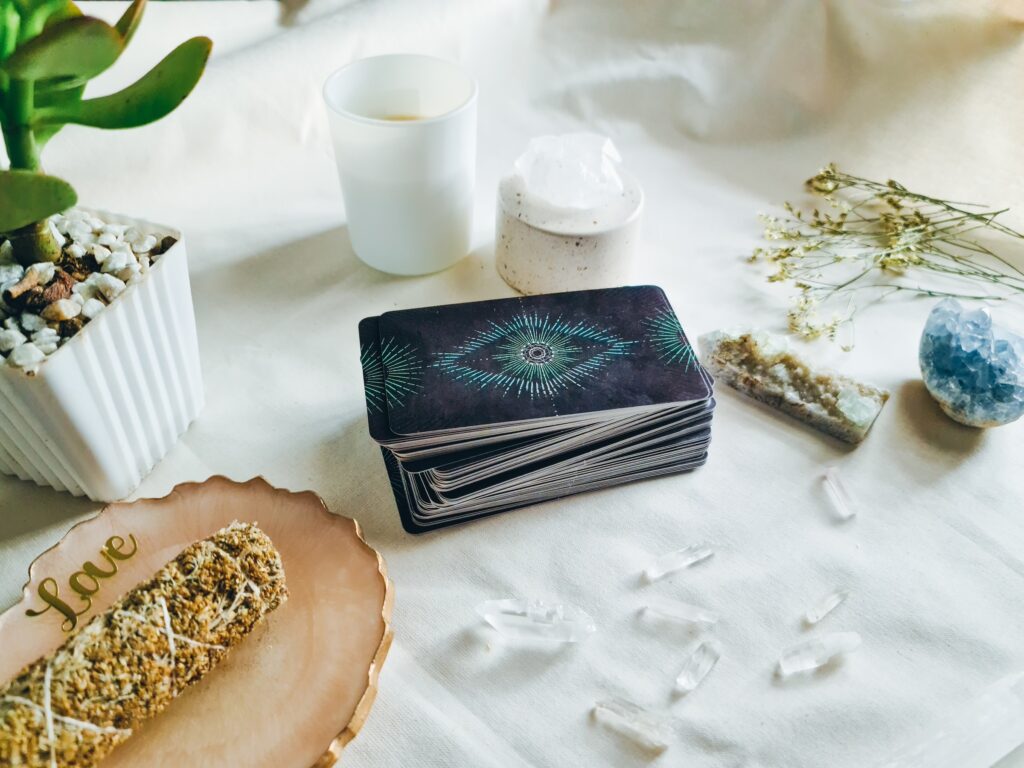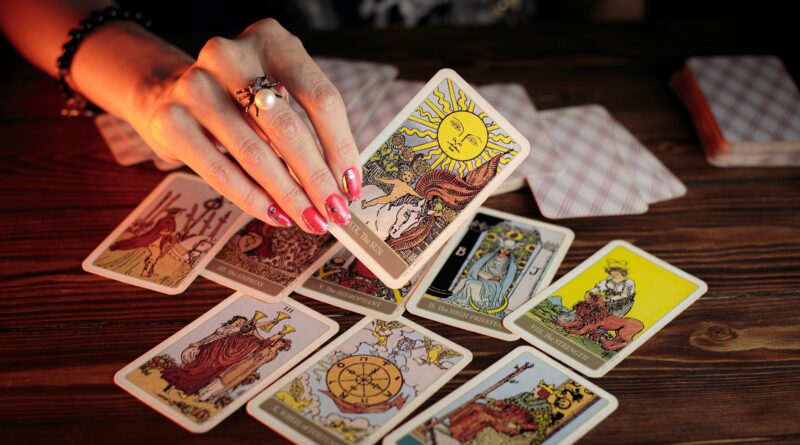Tarot

Tarot is a divination tool that has been used for centuries to gain insight into the past, present, and future. Tarot cards are a deck of 78 cards, each with a unique image and symbolism. The cards are divided into two major groups: the Major Arcana and the Minor Arcana.
The Major Arcana comprises 22 cards, which are considered the most significant cards in the deck. Each of these cards represents a major life event or a significant archetypal energy, such as The Fool, The Magician, The High Priestess, The Empress, The Emperor, The Hierophant, The Lovers, The Chariot, Strength, The Hermit, The Wheel of Fortune, Justice, The Hanged Man, Death, Temperance, The Devil, The Tower, The Star, The Moon, The Sun, Judgment, and The World.
The Minor Arcana comprises 56 cards and is divided into four suits: Swords, Cups, Wands, and Pentacles. Each of these suits represents a different aspect of life, with Swords representing mental and intellectual energy, Cups representing emotions and relationships, Wands representing creativity and passion, and Pentacles representing material and practical matters.
The cards are often used in a tarot reading, where the reader lays out the cards in a specific pattern and interprets the cards’ meanings to provide insight and guidance to the querent, the person asking the question. Tarot readings can provide information on a wide range of topics, from career and finances to relationships and spirituality.
Some people believe that tarot cards have magical properties and that the cards themselves can help guide the reader’s intuition. Others view tarot as a tool for self-reflection and personal growth, allowing the querent to explore their subconscious thoughts and feelings.
Regardless of one’s beliefs, tarot can be a powerful tool for self-discovery and guidance. Whether you are a seasoned tarot reader or just starting, the cards can offer a unique perspective on your life and the world around you.

